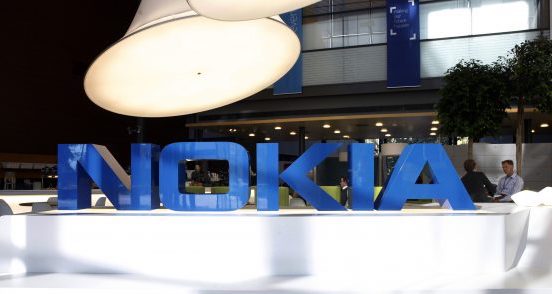After last week’s summit in Australia, the Five-Eyes Governments, which include the United States, the United Kingdom, Canada, Australia and New Zealand, issued a statement calling on the technology industry to willingly provide access to encrypted information. While encryption is by far the safest way for private information to travel between the sender and receiver, the Five-Eyes group argue that it can also be “used by criminals, including child sex offenders, terrorists and organized crime groups to frustrate investigations and avoid detection and prosecution.” Even though the debate of privacy versus security when it comes to data encryption is not a new one, many cybersecurity experts still claim that there is no safe way to provide authorities with a backdoor access to decoded information without introducing vulnerabilities that may be exploited by hackers. Despite this argument, the alliance is pushing technology providers to “create customized solutions, tailored to their individual…
Vodafone India and Idea Cellular have finally completed their $23 billion merger after the National Company Law Tribunal approved their request to join forces in becoming the number one telecom service provider in India. The new entity will be listed as Vodafone Idea Ltd and will have a base of over 400 million subscribers (35% subscriber market share and 32,2% of the market revenue share), surpassing the long-time market leader Bahrati Airtel. The rival that aroused the idea for the merger with its successful entry into the market, Reliance Jio, is left in third place. “Today, we have created India’s leading telecom operator. It is truly a historic moment. And this is much more than just about creating a large business. It is about our Vision of empowering and enabling a New India and meeting the aspirations of the youth of our country,” commented the chairman of the new board…
Earlier this week, a leading IT solutions provider Tech Mahindra, announced its partnership with Microsoft to build a blockchain-based robust ecosystem meant to tackle unsolicited commercial communications in India. This blockchain solution will be developed based on Microsoft Azure, and will comply with the regulations issued by the Telecom Regulatory Authority of India (TRAI). TRAI has been working with both these companies and other stakeholders to curb the profusion of spam calls and messages so widely spread across the country. While the initial step of introducing a “Do Not Disturb” registry in 2010 seems to be a success with 230 million listed subscribers, the telemarketers still manage to find fraudulent workarounds to obtain consent and continue delivering spam calls. “Blockchain as a technology is a powerful tool to combat the issue of spam calls and fraud risks, to protect user information, as well as the integrity of the telecom sector.…
Nokia has signed an agreement with the European Investment Bank (EIB) for a loan of 500 million Euros (572 million US dollars) to accelerate the development of cutting edge 5G technology. This loan, supported by the European Fund for Strategic Investments (EFSI), will present opportunities for the Finnish telecom equipment manufacturer to invest in the research, development and innovation of the soon-to-be telecommunication standard technology, thereby expanding the market and displaying the potential of 5G in Europe. “We have to understand that China and the US have moved fast with the 5G. It is very important to have European companies going in for this competition,” commented the EIB vice president Alexander Stubb in the online Finnish newspaper Helsingin Sanomat. While the specific uses for the funds have not yet been identified, it is clear that Nokia’s end-to-end network will greatly benefit from this loan by ensuring the connectivity and reliability…
Not being concerned about your privacy on the Internet is simply a mistake you cannot afford to make. Fortunately, there are plenty of Virtual Private Network services available that can protect you from being hacked and spied upon when using the web. voip.review has previously discussed what a VPN is, and why do you need it, and in this article we have selected the top 10 VPNs from the hundreds that are available to be found online. Here is a list of our handpicked VPNs (in no particular order), with detailed descriptions of their services and specifications. Nord VPN With close to 5,000 optimized servers in 62 countries, Nord VPN claims to provide the fastest VPN connection. Nord VPN includes 2048-bit encryption, support for PPTP, L2TP and OpenVPN protocols, optional dedicated IP addresses, encrypted proxy extensions for Chrome and Firefox browsers, and a strict “no logs” policy. A generous number…
According to a recent report from The Intercept, Google is planning to relaunch its search engine in China, meeting all the Chinese government’s censorship requirements. Back in 2010, the Internet giant withdrew its services from China due to strict censorship. Now Google is clawing its way back into the world’s largest Internet market, with a censored version of their search engine under the codename “Dragonfly”. The first platform to be developed is an Android app that is expected to be finalized in the upcoming six to nine months, claims The Intercept. The appeal of 750 million Internet users would be quite tempting to anyone, yet this news about Google has been met with some negativity, and may be considered as showing support for the totalitarian regime in China. “This has very serious implications not just for China, but for all of us, for freedom of information and Internet freedom. It…
The Chinese equipment manufacturer Huawei recently expressed its intention to surpass Apple in the smartphone market in 2018, and it seems that these plans are becoming a reality. According to IDC, Huawei shipped 54.2 million mobile devices units in the second quarter and moved to the second position, only to be outpaced by the ultimate leader Samsung. Looking at the total market share from Q2, Samsung maintains a strong 20.9%, while Huawei controls 15.8%, closely followed by Apple’s 12.1%. “The continued growth of Huawei is impressive, to say the least, as is its ability to move into markets where, until recently, the brand was largely unknown,” commented the program vice president with IDC’s Worldwide Mobile Device Trackers, Ryan Reith. Huawei’s recent push into Europe, the Middle East and India has secured its position among the top smartphone manufacturers. And while the US carriers are still instructed by the government to…
Singapore has long been known as the south-east Asian center for network expansion, due to its booming data center industry. The technology giant Google has revealed plans to expand their network in the region by building a 3rd data center in Jurong West, thereby increasing their long-term investment in Singapore’s data centers to $850 million. Google’s first data center was built in Singapore in 2011, followed by the second in 2015, while the 3rd building is expected to be ready by 2020. “In the three years since our last update, more than 70 million people in Southeast Asia have gotten online for the first time, bringing the region’s total to more than 330 million–that’s more than the population of the United States,” commented the vice president of Data Centers at Google, Joe Kava. The newest facility will be built nearby the previous two, and will continue Google’s environmentally friendly approach…
The Facebook-owned communications platform WhatsApp has announced the rollout of their WhatsApp Business API, which will enable businesses to manage communications and send notifications and other non-promotional messages, such as appointment reminders, event tickets and more. WhatsApp has emphasized that when using this new platform, the communication must be initiated by customer sending a message or requesting information. Moreover, the communications between the two parties will incorporate end-to-end encryption, despite traffic passing through an API. There is a cost to this service – the businesses can reply to these messages free of charge within 24 hours, while all the replies sent after this period will be charged at a set price. Another useful feature of WhatsApp Business is that it will soon be possible to use the Facebook Ads Manager to add a “click-to-chat” button on Facebook advertisements, with a direct link to WhatsApp Business chat. WhatsApp Business for Android…
Connecting to a public WiFi network at airports, hotels or even at a local coffee shop is not always as safe as one might think, as intercepting private information sent over a public network is quite easy even for inexperienced hackers. As a result, Verizon has decided to combat this security vulnerability by launching a VPN for their customers, Safe Wi-Fi. This new service protects personal data from prying eyes, and blocks advertisement trackers by using VPN encryption. Safe Wi-Fi is available on iOS and Android devices for a fee of $3.99 per month, and can cover up to 10 devices linked to a Verizon account. Considering how much the theft of personal information might cost a user, this is a small price to pay for keeping important data secure.













